Underwater Explosion below a Ship Hull
This simulation is a simple model for the explosion of an underwater bomb below a ship in a harbor. The right and lower computational boundary are fixed walls, while the left boundary has outflow boundary conditions. The upper boundary has outflow boundary conditions for the fluid and corresponds to the water surface. A ship hull (width 16m, depth 10m) described with embedded fixed wall boundary conditions extends from the upper boundary into the domain. The bomb is modeled by an energy deposition equivalent to 30kg TNT in a circle of 1m diameter with its center 15m below the water surface and approximately 5.4m away from the ship. The circle with high energy is assumed to be gas surrounded by water. The two-phase flow problem is simulated with a Roe-type Riemann-solver derived by K.-M.Shue, An efficient shock-capturing algorithm for compressible multicomponent problems, J. Comput. Phys. 142, 208-242 (1998), with a multi-componont mass-fraction-based model built upon the "stiffened" gas equation of state

The computation uses
The simulation on a computational domain of 40m x 30m is done on a 80x60 base grid and uses two additional levels of refinement with factors 2 and 4.
The pictures below show a color plot of the pressure with iso-surfaces of the phase boundary that illustrate the gas-bubble's expansion and a plot of the refinement levels overlaid by iso-surfaces of the pressure.
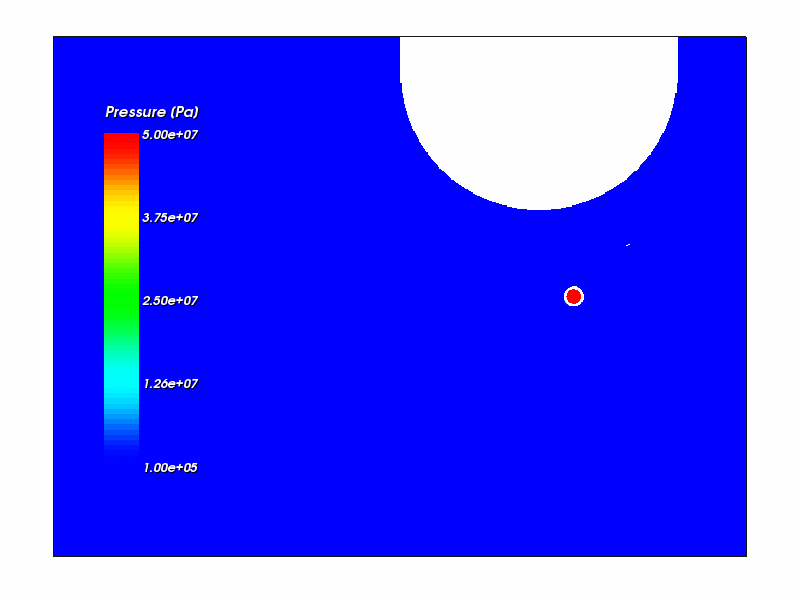 | 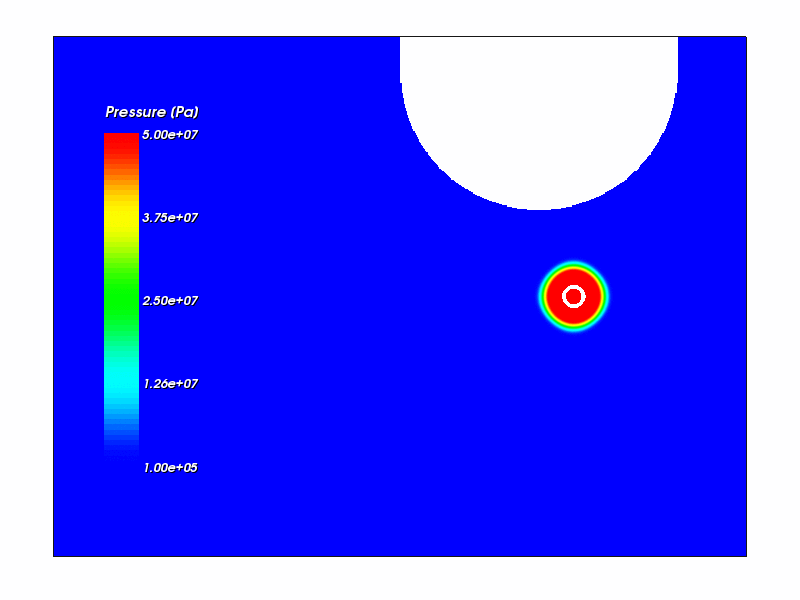 | 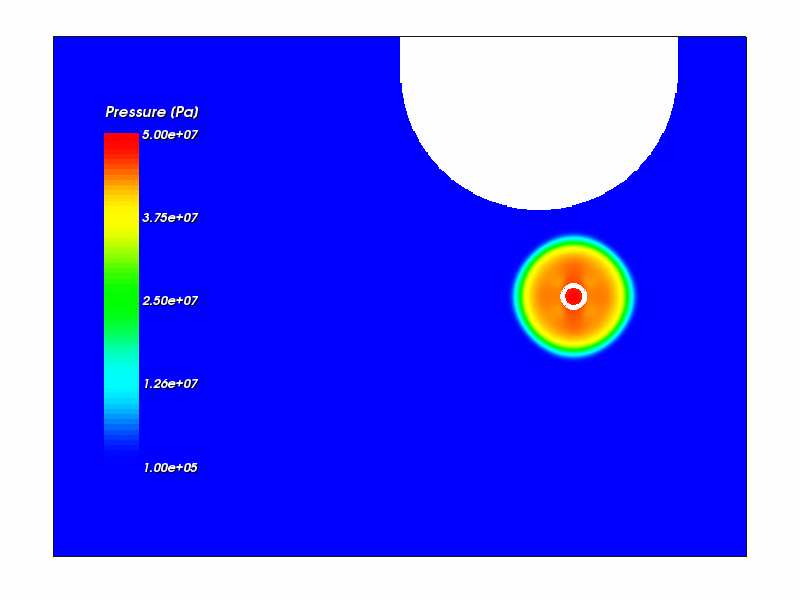 | 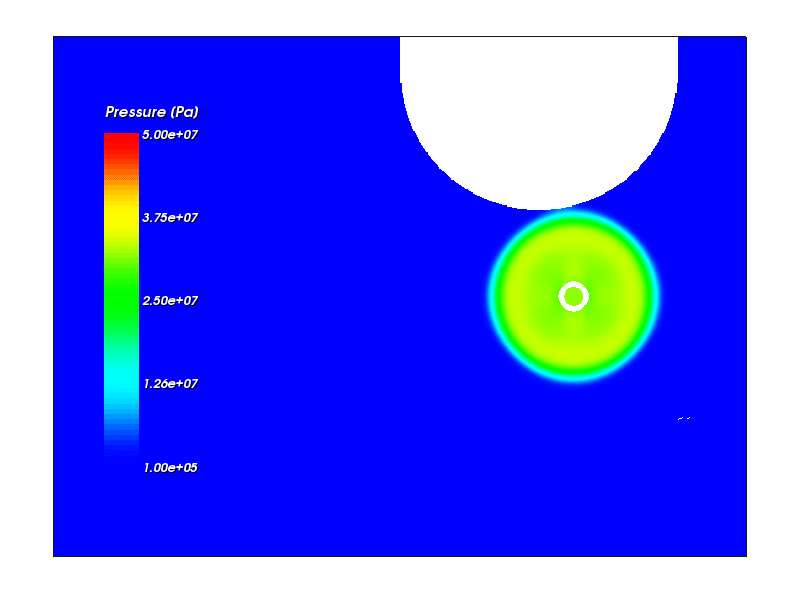 | 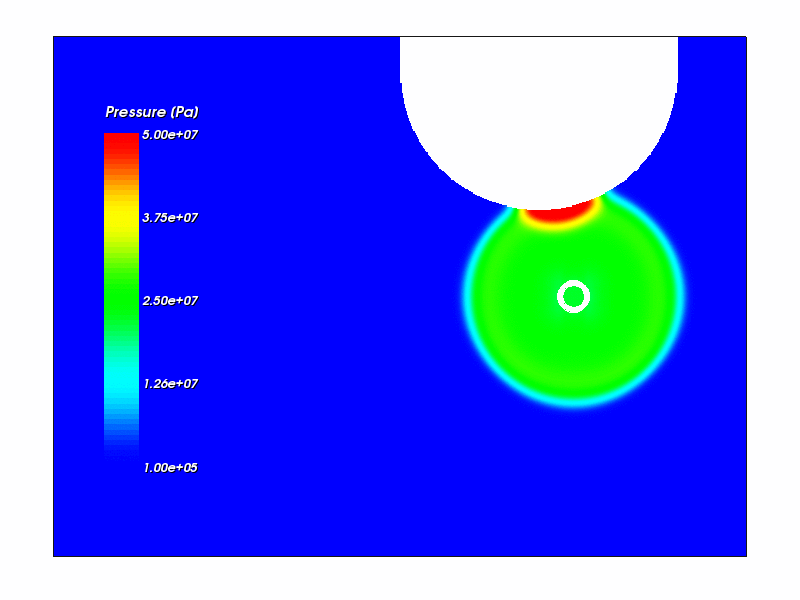 | 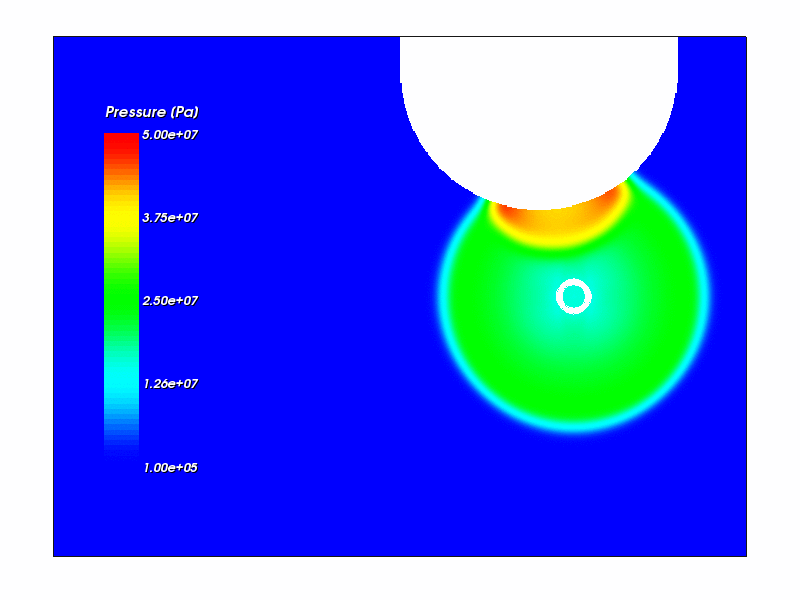 |
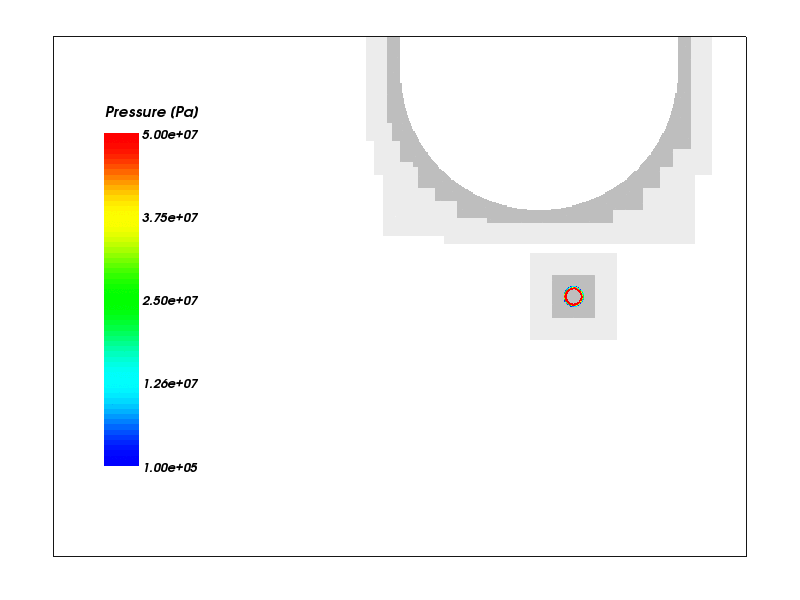 | 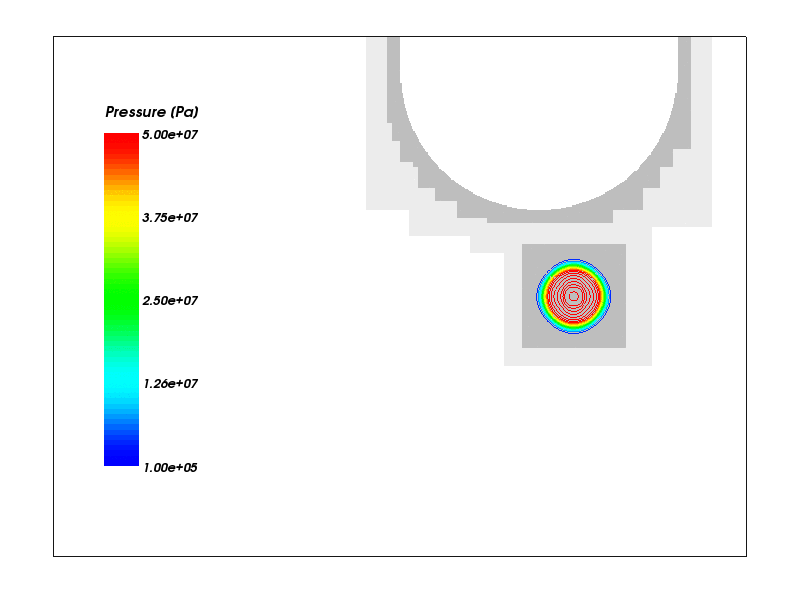 | 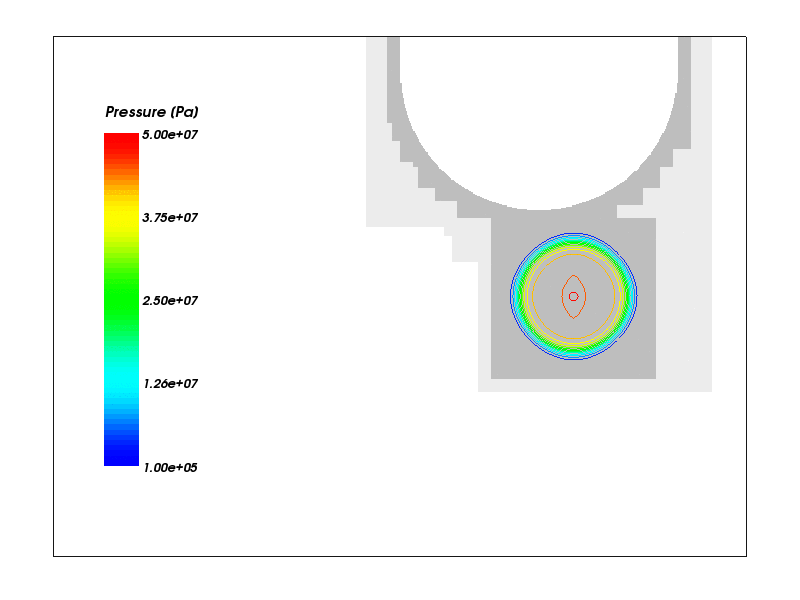 | 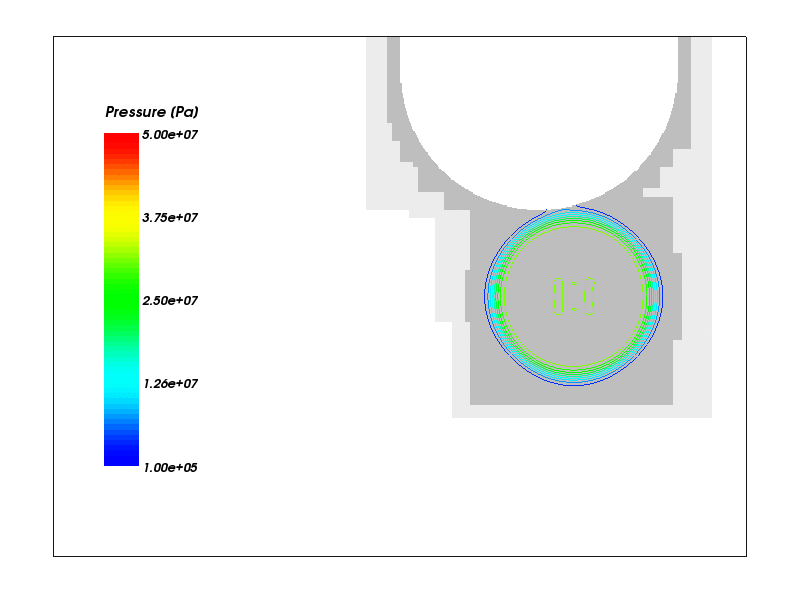 | 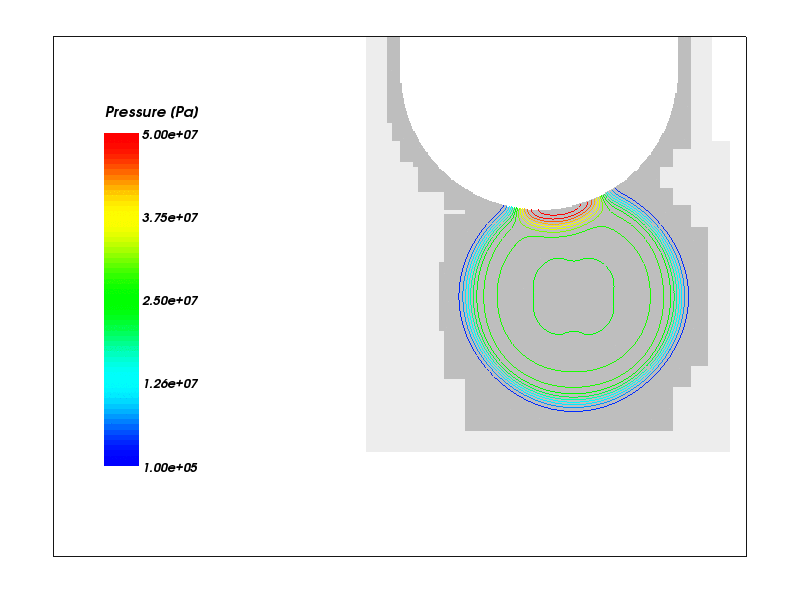 | 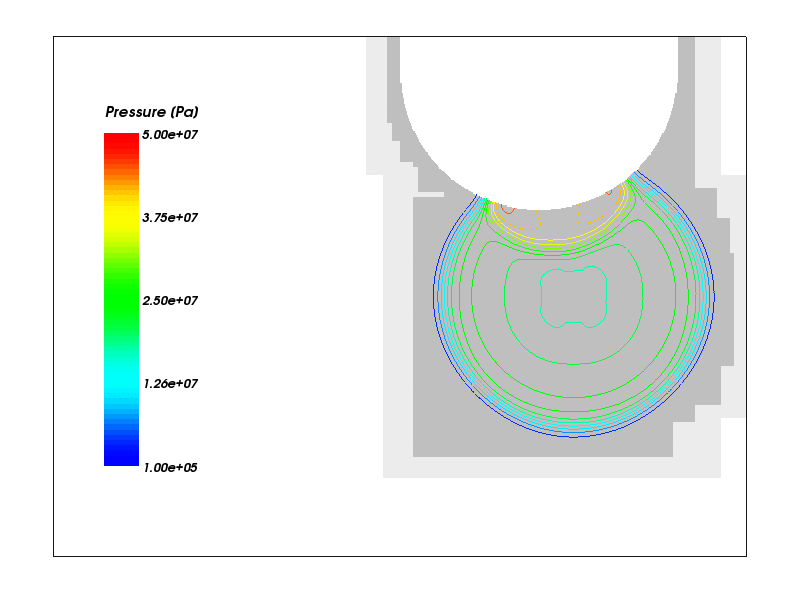 |
| t=0.00ms | t=0.78ms | t=1.64ms | t=2.51ms | t=3.38ms | t=4.26ms |
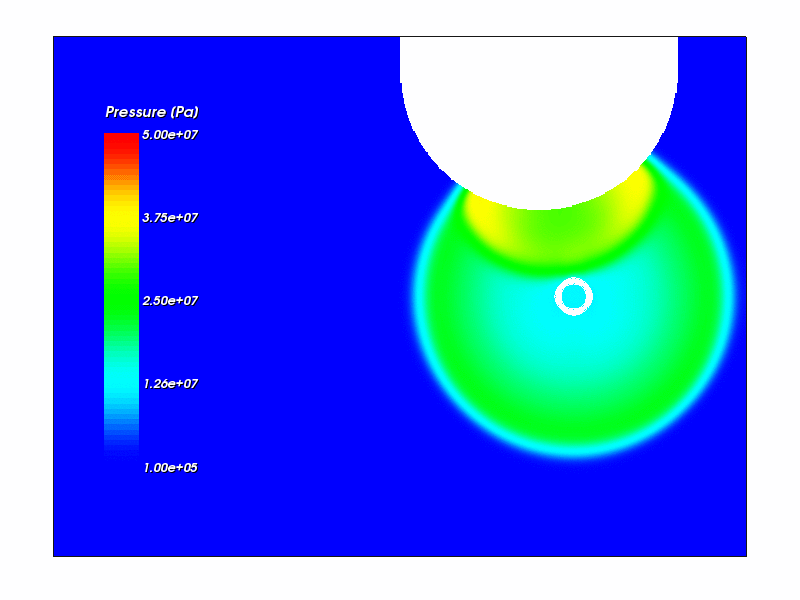 |  | 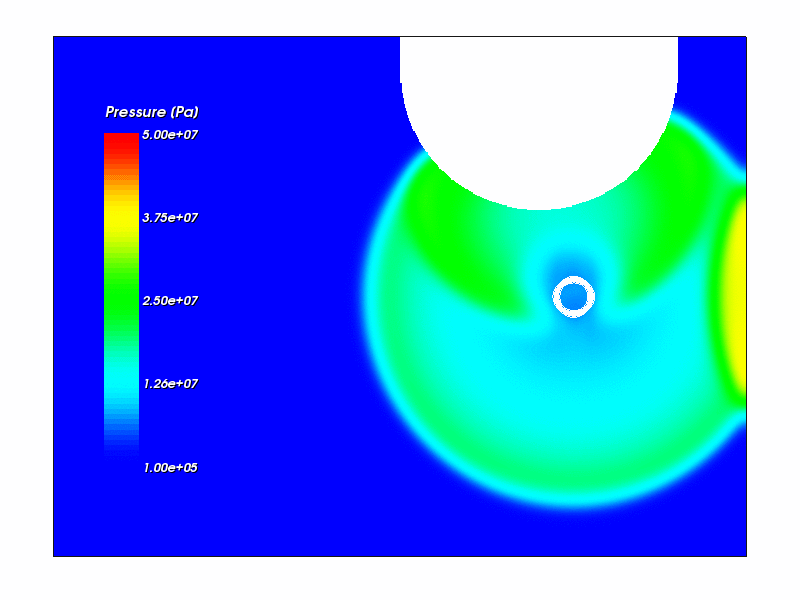 | 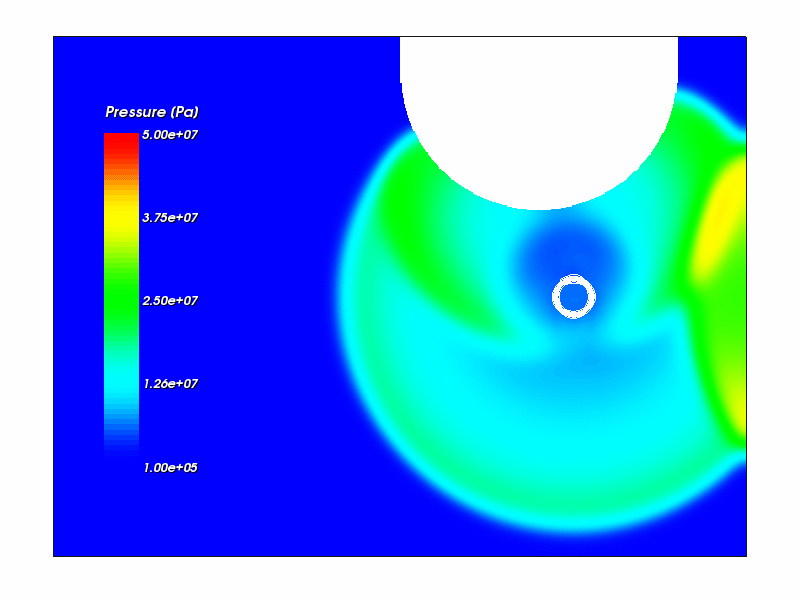 | 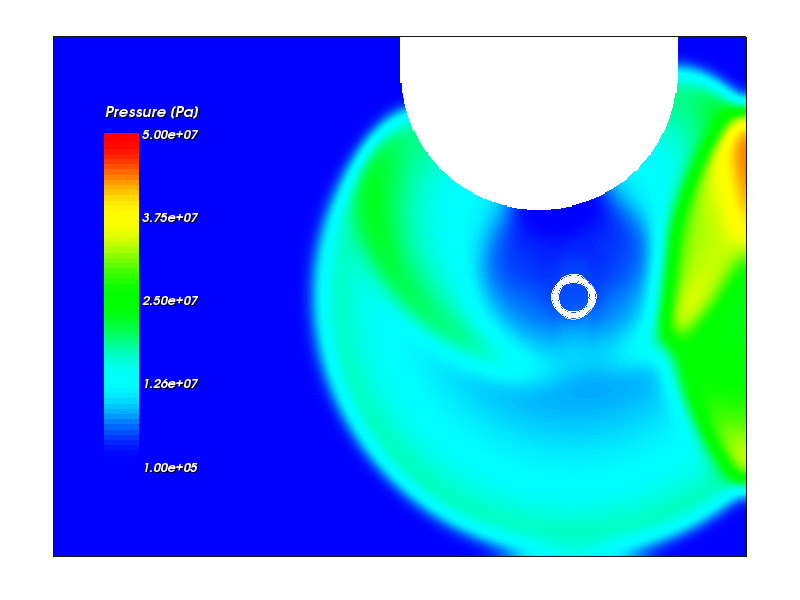 |
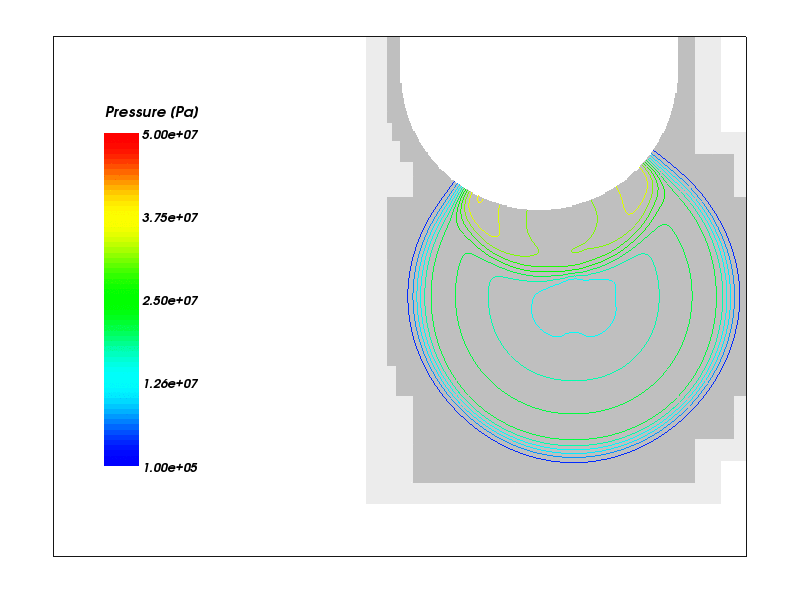 | 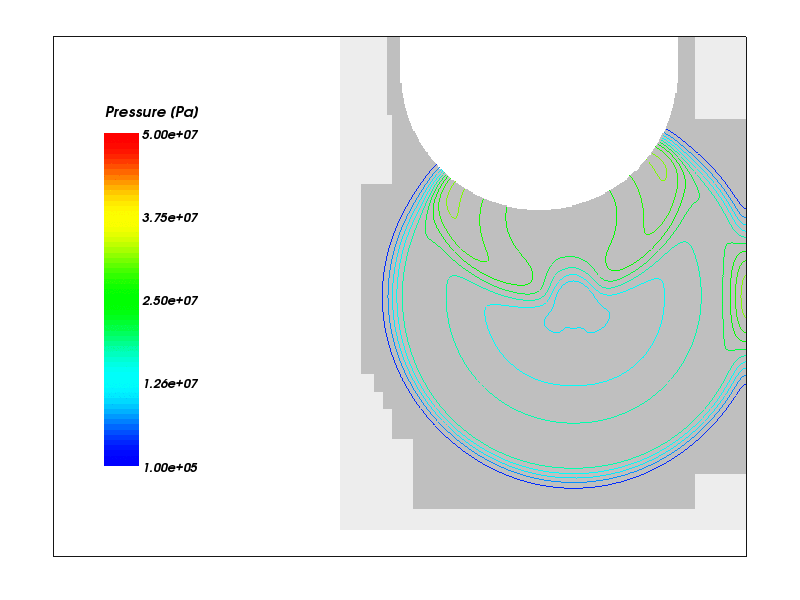 | 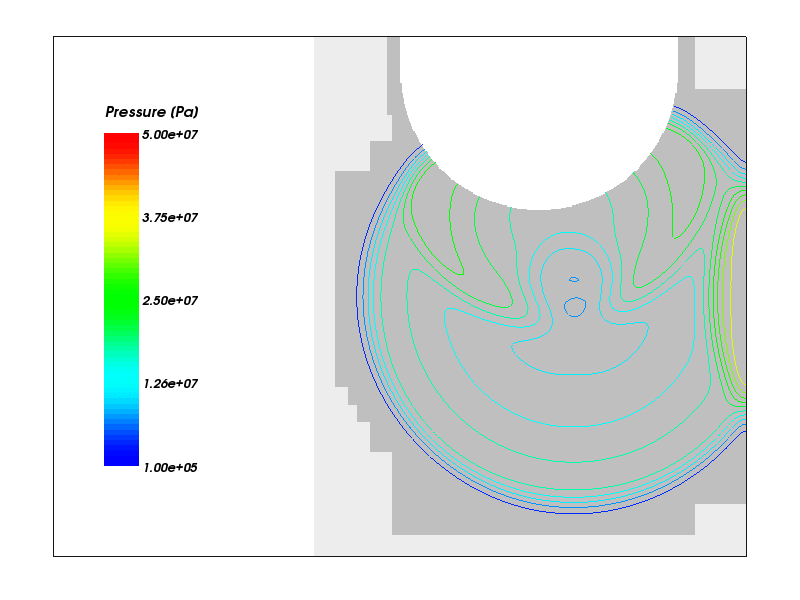 | 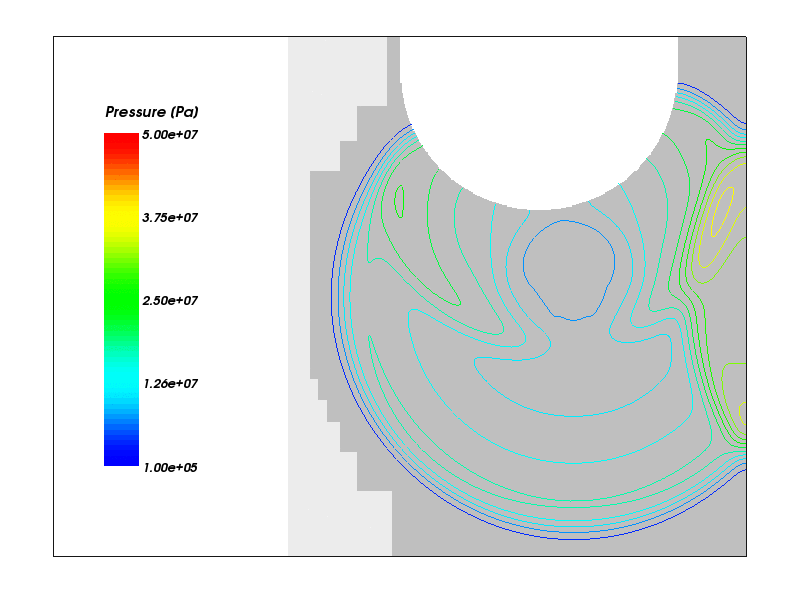 | 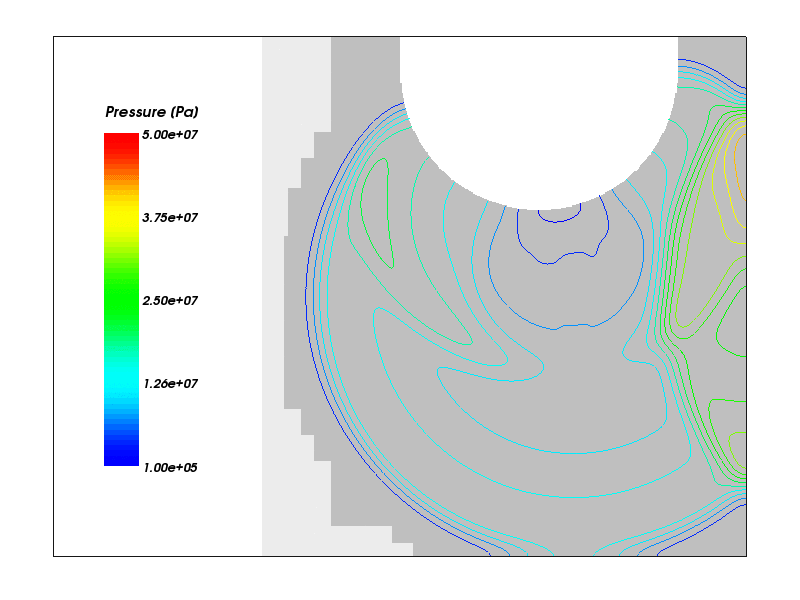 |
| t=5.14ms | t=6.03ms | t=6.92ms | t=7.81ms | t=8.70ms |
--
RalfDeiterding - 23 Oct 2005























